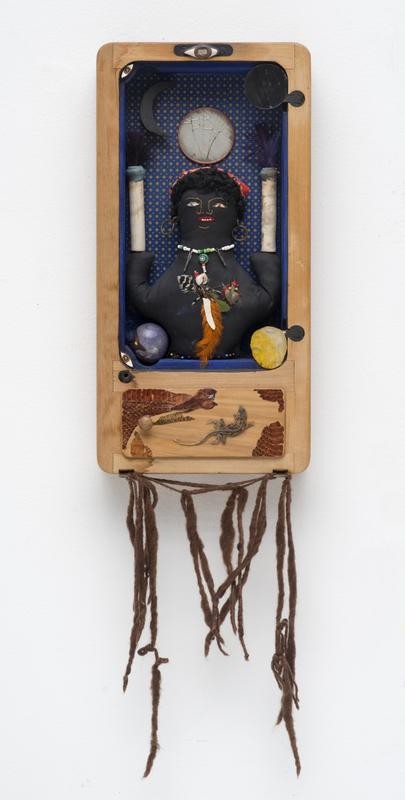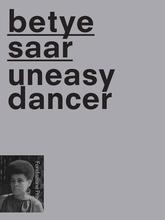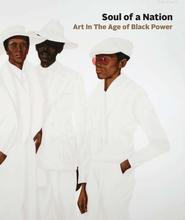More about Gris-Gris Box
- All
- Info
- Shop

Contributor
Got pesky ghosts? Got a culture diminished by neo-colonialism? Then you need the Gris-Gris Box!
There’s something blissfully therapeutic—and inexpensive—about cursing your troubles away. For the very low price of $30, for example, you can buy a 100% genuine gris-gris as used by those in West Africa (with $9 for a double cast, or twice the gris-gris power). A gris-gris, in case you didn’t know, is a highly versatile charm for good luck or protection. Betye Saar used her Gris-Gris Box of 1972 to ward off all those nasty stereotypes that came flying her way. And it worked like a charm. Because it was.
Faith Ringgold, another badass in the “I Want My Culture Back” Club of the '70s, channeled her messages through quilts and paintings. Saar, though, was the first woman to include actual historical relics in her art. Let’s start with a breakdown of the Gris-Gris Box, now at MOCA.
The three eyes on the outer rims of the box are especially important because many spiritual traditions view the third eye as one’s inner spirituality. Likewise, the blue box containing the black doll invites viewers to look beyond the larger box (aka popular beliefs) and into the smaller one (aka inner beliefs). The rocks, beads, hairs, feathers, and chameleon skin all provide good luck.
Saar got her “boxing” inspiration from Joseph Cornell, whose artwork-in-boxes influenced Yayoi Kusama mirrored rooms, and her “assembling” inspiration from Simon Rodia, who built the Watts Towers in LA.
Saar made this assemblage the same year she made her most famous “ancestral box,” The Liberation of Aunt Jemima. The new Jemima serves up justice, not hotcakes. The new Gris-Gris doll spews out honest-to-goodness, organic black magic, not that creepy, uncultured stuff you see in mass media.
Chosen weapons aside, they both try to reformulate the caricatured image of African Americans that America has upheld for so long. Saar saps any negativity away from the assumptions associated with voodoo dolls like an artistic fairy godmother who just so happens to also fight for human rights.
On a more metaphysical note, Saar has called the process of making her assemblages “power-gathering” because they give her a power greater than that of the individual objects. This power also comes from taking items pre-packaged with a story (she finds most of her things from thrift shops) and redefining their uses on her own terms. Look up defiance in the dictionary of an artist, and you’ll find creativity as a synonym.
But wait, there’s more! As Saar’s private spirituality became more political, she hoped to reach not just Louisiana, from where the gris-gris is mostly associated and where her grandparents grew up, but to anyone who could resonate with her images. You don’t have to be African-American to vibe with the Gris-Gris Box. And you certainly don’t need to be “all-American” to live in America.
Sources
- Billingslea-Brown, Alma Jean. Crossing Borders Through Folklore: African American Women's Fiction and Art. Columbia, MI: University of Missouri Press, 1999.
- Collins, Lisa Gail., and Margo Natalie. Crawford, eds. New thoughts on the Black arts movement. New Brunswick (N.J.): Rutgers University Press, 2008.
- "Gris-Gris Box | Betye Saar." Hammer Museum. November 07, 2016. https://hammer.ucla.edu/now-dig-this/art/gris-gris-box/.
- Murray, David. "Black Arts: Conjure and Spirit." In Matter, Magic, and Spirit, 102-26. Philadelphia, PA: University of Pennsylvania Press, 2007.
- Saar, Betye, and Sola Agustsson. "BETYE SAAR." Issue Magazine. http://issuemagazine.com/betye-saar/3/#/.
- Shaw, Gwendolyn DuBois. "Now Dig This!" Transition, no. 106 (2011): 163-66.













